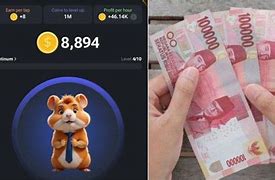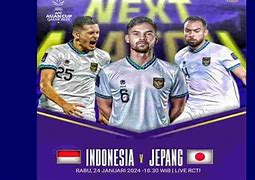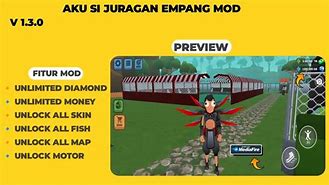Traffic through the Panama Canal is a barometer of world trade, rising in times of world economic prosperity and declining in times of recession. From a low of 807 transits in 1916, traffic rose to a high point of 15,523 transits of all types in 1970. The cargo carried through the canal that year amounted to more than 132.5 million long tons (134.6 million metric tons). Although the number of annual transits has decreased since then, the canal carries more freight than ever before because the average size of vessels has increased. There were nearly 210 million long tons (213 million metric tons) of cargo through the canal in 2013.
The principal trade routes served by the Panama Canal run between the following points: the east coast of the U.S. mainland and Hawaii and East Asia; the U.S. east coast and the west coast of South America; Europe and the west coast of North America; Europe and the west coast of South America; the east coast of North America and Oceania; the U.S. east and west coasts; and Europe and Australia.
Trade between the east coast of the United States and East Asia dominates international canal traffic. Among the principal commodity groups carried through the canal are motor vehicles, petroleum products, grains, and coal and coke.
Negara ini kaya akan keanekaragaman flora dan fauna, diperkirakan ada lebih dari 900 spesies burung dan lebih dari 1500 spesies pohon
Panama merupakan negara Amerika Latin pertama yang mengakui dolar Amerika (USD) sebagai mata uang resminya pada 1904
Hanya di Panama kamu dapat menyaksikan matahari terbit di Samudra Pasifik dan terbenam di Samudra Atlantik, menakjubkan bukan?
Lanjutkan membaca artikel di bawah
Baca Juga: 5 Tempat Wisata Keren yang Harus Kamu Kunjungi saat di Mandalika
Panama hat ternyata bukan berasal dari Panama, melainkan dari Ekuador!
Panama punya dua hari kemerdekaan, yaitu saat merdeka dari Spanyol (28 November 1821) dan Kolombia (3 November 1903)
Pembagian Wilayah Administrasi Panama
Republik Panama terbagi atas 10 Provinsi dan 3 wilayah Pribumi. Berikut ini adalah daftar 10 Provinsi dan 3 wilayah Pribumi Panama beserta Ibukotanya.
Sumber referensi : Data-data pada Profil Negara Panama ini dikutip dari CIA World Factbook.
Timnas Indonesia U17 akan bersua Panama dalam laga kedua Grup...
Kamu mungkin sudah pernah mendengar nama negara ini sebelumnya, tapi apakah kamu sudah benar-benar mengenalnya? Negara Amerika Tengah satu ini merupakan negara yang membentang seluas lebih dari 75.000 kilometer persegi ini di antara Kosta Rika dan Kolombia, serta Samudra Pasifik dan Laut Karibia.
Meskipun tidak sepopuler tetangganya, Kosta Rika, Panama tetap memiliki banyak hal menarik yang layak untuk dikepoin. Nah, dari kondisi geografis, sejarah, budaya, serta informasi seputar hal-hal ikonik dari Panama sudah terangkum di bawah ini, loh. Yuk, langsung saja disimak!
Panama Canal Authority
The Panama Canal Authority (Spanish: Autoridad del Canal de Panamá [ACP]) took over management of the canal from the joint U.S.-Panamanian Panama Canal Commission at noon on December 31, 1999. Created by an amendment to the Panamanian constitution as an autonomous agency of the Panamanian government, the ACP is charged with the administration, operation, conservation, maintenance, and modernization of the Panama Canal. It is also tasked with the care, maintenance, and preservation of water resources in the entire Panama Canal watershed. The watershed is essential to the operation of the canal, and it also supplies water to cities at either end of the canal route.
The ACP is governed by a board of directors that consists of 11 members. The chairman, who has the rank of minister of state for canal affairs, is selected by the president of the republic. The legislative branch of the government designates one director, and the remaining nine members are appointed by the president with the concurrence of the cabinet council. They must be ratified by an absolute majority of the legislative assembly.
The Dating Game: Which Came First?
While the canal was under U.S. administration, tolls for its use were set at rates calculated to cover costs of maintenance and operation, thereby making the canal self-financing. The charge for each transit was based upon the interior cargo or passenger-carrying capacity of a vessel. The rates established in 1914 remained virtually unchanged for 60 years. In 1973 the canal operated at a loss for the first time, and in 1974 the first of several rate increases went into effect.
Traditionally, cargoes were carried below deck, and tolls were assessed on goods carried there. However, because of changes in marine design and the widespread use of containerized cargoes, a large portion of the burden is now carried on deck. The volume of containerized cargo passing through the canal is outranked only by shipments of grain and petroleum products. Those changes led to modifications in rules of admeasurement and the assessment of tolls for on-deck container capacity, and a segmentation system based on vessel type and size was implemented. Following the lead of the Panama Canal Commission, the ACP approved similar changes in admeasurement regulations and retained the U.S. toll rates in effect when the canal was transferred.
In 2006 the ACP announced that its expansion programs would be financed by a new series of toll increases, sparking much debate and opposition from canal users. It was not until 2012 that the cabinet council approved a proposal to restructure the Panama Canal’s pricing system, and the two stages of the toll increase were implemented in October 2012 and October 2013. The new toll structure increased the number of segments from 8 to 10. The tanker segment was separated into three segments: petroleum and petroleum products tankers, gas vessels carrying liquefied petroleum gas (LPG), and chemical vessels. Roll-on/roll-off (ro-ro) vessels, which are designed to carry wheeled cargo, became part of the vehicle carrier segment, and the container/break-bulk segment was eliminated. Tolls for general cargo, dry bulk, tanker, chemical tanker, LPG, and vehicle carrier and ro-ro were increased.
From the tolls collected, the ACP must pay an annual fee to the Panamanian national treasury. Any surplus remaining after that and the payment of canal operational and maintenance expenses also goes to the treasury.
As early as the 16th century, the Spanish recognized the advantages of a canal across the Central American isthmus. Eventually two routes came to be considered, one through Panama and the other through Nicaragua. Impetus for selecting the route through Panama increased with the construction (by the United States) of the Panama Railroad in the mid-19th century. The eventual route of the canal closely followed that of the railroad.
Sekitar 25% dari wilayah Panama dilindungi oleh 16 taman nasional dan 50 kawasan lindung lainnya
Lesseps’s failed attempt
The first attempt to build a canal across the Isthmus of Panama began in 1881 after the Colombian government granted a concession to the privately owned Compagnie Universelle du Canal Interocéanique. The company, under the leadership of Ferdinand de Lesseps, was financed by French capital from countless small investors. Because of Lesseps’s recent triumph building the Suez Canal, he was able to attract public support for building a sea-level canal across Panama. That proposal was protested strongly by Adolphe Godin de Lépinay, baron de Brusly, an engineer who had studied the isthmus. Lépinay knew the surface features at Panama: the Continental Divide 9 miles (15 km) from the Pacific, the torrential Chagres River flowing into the Atlantic, and the smaller Río Grande flowing into the Pacific—both rivers suitable for creating artificial lakes. In 1879 he proposed a “practical” plan for building a canal, calling for a dam at Gatún and another at Miraflores (or as close to the seas as the land would permit), letting the waters rise to form two lakes about 80 feet (25 metres) high, joining the lakes by cutting across the Continental Divide, and connecting them to the oceans through locks.
Lépinay’s conception eventually established him as an architectural and engineering genius and as the originator of the plan from which the Panama Canal was built. Unfortunately for the French, however, his idea was ignored at the time, and the Compagnie Universelle embarked on its ill-fated undertaking. Lesseps was unfamiliar with conditions in Panama or was unwilling to acknowledge that they were vastly different from Suez. Unlike the arid desert of the Isthmus of Suez, Panama was a tropical jungle, with diluvial rains, debilitating heat and humidity, and tropical diseases. Topographic conditions along the proposed route varied considerably and ranged from coastal marshes to the mountains of the Continental Divide. Despite competent engineering, there was no sound overall plan. Machinery used to dig the canal was either too light or ill-suited for the tough inland terrain, and disease took a terrible toll in workers’ lives.
Progress was costly and extremely slow. As a cost-saving measure, the plans for a sea-level canal were eventually dropped in favour of a high-level lock-type canal, but that change had little effect. With no foreseeable return on its investment, the French public lost faith in the project and its leader. Attempts at further financing failed, and the company collapsed in 1889. Although the company reorganized in 1894, it virtually ceased to function by 1898. Any possibility of completing the canal across Panama was gone; its sole hope lay in holding together an enterprise that could be offered for sale. In the end, less than half of the excavation made by the French was used in the U.S. canal.
Orta Amerika’nın güneyinde yer alan Panama, Atlas Okyanusu ve Büyük Okyanusu birbirine bağlayan Panama Kanalı’na ev sahipliği yapmaktadır. Panama, istikrarlı büyüme trendi, düşük düzeyde seyreden işsizlik ve enflasyon oranları, dengeli siyasi yapısı ile Latin Amerika’nın en önemli ekonomilerinden biri hâline gelmeyi başarmıştır.
Thank you for your feedback
Our editors will review what you’ve submitted and determine whether to revise the article.
Profil Negara Panama – Panama adalah sebuah negara Republik yang terletak di tenggara Amerika Tengah (Benua Amerika Utara, Sub Region Amerika Tengah). Dalam sejarahnya, Panama pernah merupakan koloni Spanyol dari abab ke-16 hingga pada tahun 1821 bergabung dengan Gran Colombia yang meliputi negara Persatuan Kolombia, Ekuador dan Venezuela. Dengan dukungan Amerika Serikat, Panama memisahkan diri dari Kolombia pada tahun 1903 dan mendeklarasikan kemerdekaan Panama sebagai negara Republik yang berdaulat. Dua minggu kemudian, perwakilan Republik Panama menandatangani perjanjian dengan Amerika Serikat yang isinya adalah mengizinkan Amerika Serikat untuk membangun sebuah kanal dan memberikan hak penuh untuk mengatur kanal tersebut. Baca juga : Negara-negara di Benua Amerika Utara beserta Ibukotanya.
Kanal yang dikenal dengan nama Terusan Panama (Panama Canal) tersebut merupakan kanal yang memiliki letak strategis yang menghubungkan samudera Pasifik dan samudera Atlantik. Terusan Panama yang panjangnya 77km ini dibuka secara resmi pada tanggal 15 Agustus 1914. Hak Kontrol Amerika Serikat atas Terusan Panama ini berakhir pada tanggal 31 Desember 1999 berdasarkan perjanjian Torrijos-Carter. Saat ini, Terusan Panama dikontrol Otoritas Terusan Panama.
Secara astronomis, Panama terletak di antaran 7°LU – 9°LU dan 77°BB – 83°BB, Panama berbatasan darat dengan Kolombia di sebelah Timur dan Kosta Rika di sebelah Baratnya. Di sebelah Utara adalah Laut Karibia dan disebelah Selatan adalah Samudera Pasifik. Panama memiliki luas wilayah sebesar 75.420 km2 dengan jumlah penduduk sebanyak 3.753.142 (estimasi Juli 2017). Mayoritas penduduk Panama beragama Katolik Roma (85%) dan Protestant (15%). Bahasa resmi Panama adalah bahasa Spanyol.
Panama adalah negara yang menganut sistem pemerintahan Republik Presidensil yaitu sistem pemerintahan yang kepala negara dan kepala pemerintahannya adalah Presiden. Presiden Panama dipilih oleh rakyatnya melalui Pemilihan Langsung. Masa Jabatan Presiden dan Wakil Presiden adalah 5 tahun. Presiden Panama saat ini adalah Presiden Juan Carlos VARELA yang dipilih sejak 1 Juli 2014. Ibukota Panama adalah Panama City (Kota Panama).
Di bidang Perekonomian, Pendapatan Domestik Bruto Panama adalah sebesar US$ 92,95 miliar dengan pendapatan perkapita sebesar US$ 23.000,-. 76,7% Pendapatan Domestik Bruto Panama berasal dari sektor Jasa yang meliputi jasa dalam pelayanan Terusan Panama, Logistik, Perbankan, Perdagangan bebas Colon, Asuransi, Pelabuhan Kontainer, Pendaftaran Kapal dan Pariwisata. Sektor penyumbang PDB kedua adalah sektor Industri yaitu sebesar 15,5%. Industri-industri utama di Panama diantaranya adalah Konstruksi, Semen dan bahan-bahan Konstruksi, penggilingan gula dan pembuatan bir. Di hubungan luar negeri, Panama juga merupakan negara anggota PBB dan lembaga-lembaga internasional lainnya yang berada di bawah PBB.
Berikut ini adalah Profil Negara Panama :




